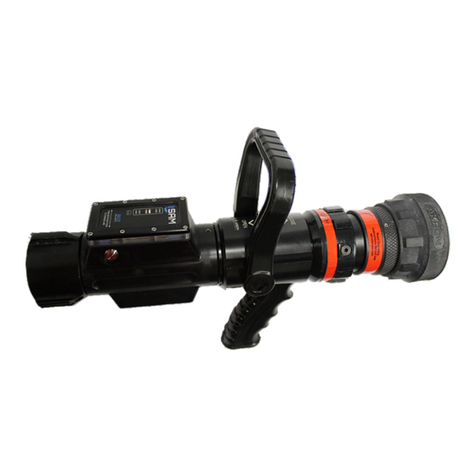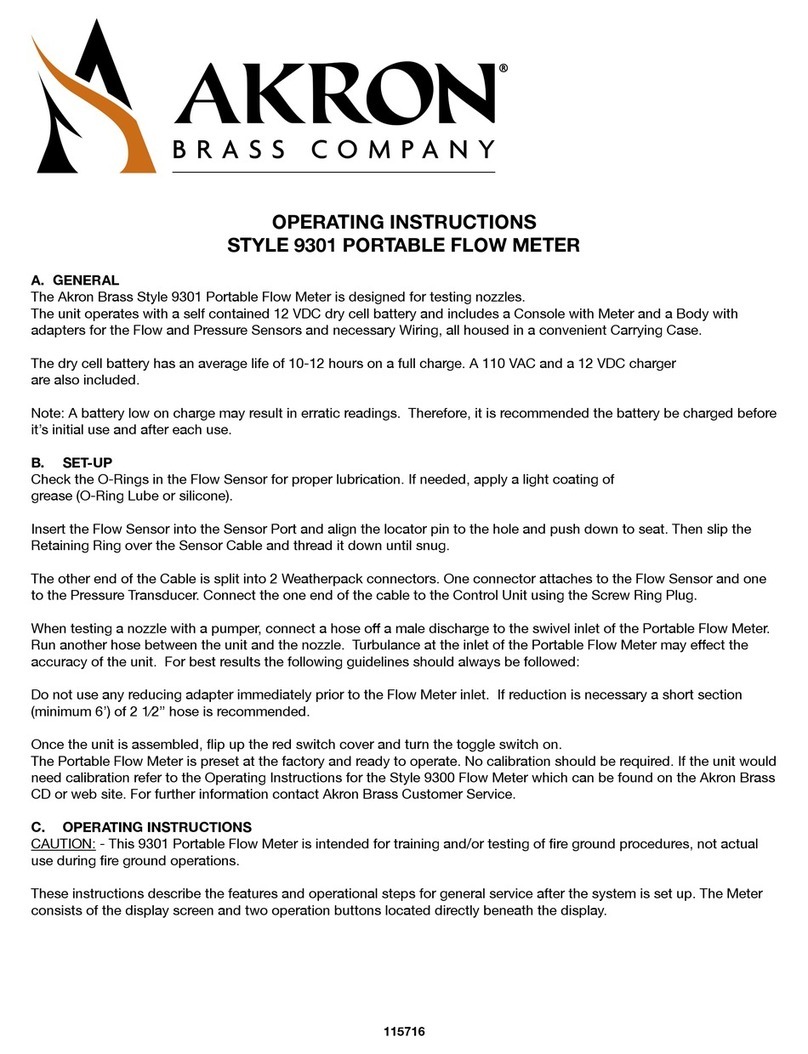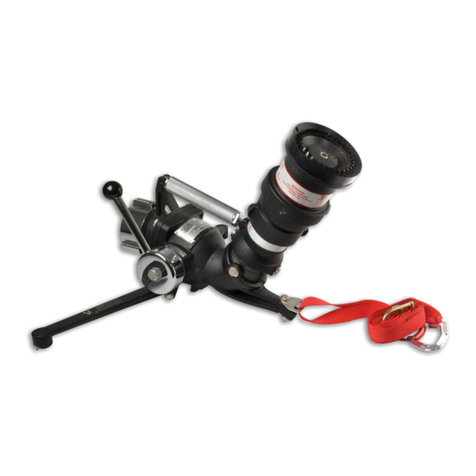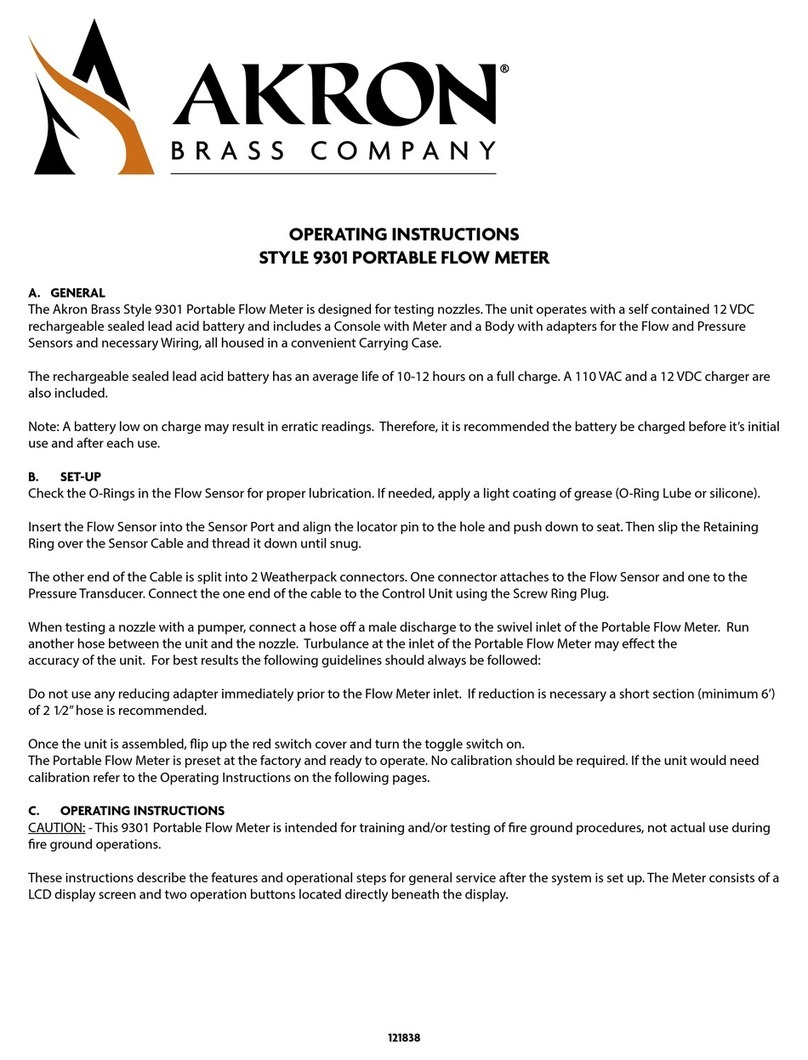
OSCILLATING FLANGE SET-UP INSTRUCTIONS:
OVERVIEW:
The oscillating flange can be adjusted to oscillate at fixed angles between 30º and 165º. Use the angle adjustment on the oscillating flange to set the
oscillation sweep width. The monitor can be adjusted to center the stream horizontally and vertically. Check the CRANK ARM position of the oscillating
flange before setting up the system (see CRANK ARM POSITION in MONITOR INSTALLATION). Use the monitor controls to center the water flow at the
desired target.
ADJUSTING THE OSCILLATION RANGE:
The crank arm rotates in a continuous counter-clockwise rotation which drives a mechanism generating the oscillating motion. The oscillation range can
be adjusted from 30º - 165º by moving the angle adjustment bolt.
To adjust the angle of oscillation:
1. Shut off water supply.
2. Close the SPEED CONTROL knob.
3. Remove the angle adjustment lid from the guard (Figure 1).
4. Unscrew the angle adjustment bolt connecting the crank arm to the coupling arm (Figure 1).
5. Position the coupler in the correct bolt position based on the desired oscillation angle (Figure 6).
6. Thread the bolt back into the crank arm and tighten to 25 ft-lbs (300 in-lbs, 34 N-m). The bolt shoulder
must pass through the bushing in the coupling arm.
7. Replace angle adjustment lid on the guard when the angle adjustment is complete.
8. Aim monitor to a safe area.
9. Turn water supply on and open SPEED CONTROL knob to verify that the oscillation range and monitor
angle is adjusted as intended.
10. If monitor angle needs adjusted, close SPEED CONTROL knob and adjust monitor angle according to
monitor instructions.
11. Open the SPEED CONTROL knob to the desired speed of oscillation. The speed of oscillation will in
crease or decrease with changes in pressure or flow. Additionally, the speed of oscillation will increase as
the oscillation range setting increases.
12. If oscillation range needs further adjustment, repeat steps 1 through 10.
WARNING: The oscillating flange contains moving parts. Keep hands, fingers, and objects away from moving parts
and never operate without guards.
WARNING: Keep all personnel out of the WATER DISCHARGE AREA (Figure 2), in front of the outlet of the monitor,
when the water source is attached. Dangerous flow velocities can cause serious injury.



































